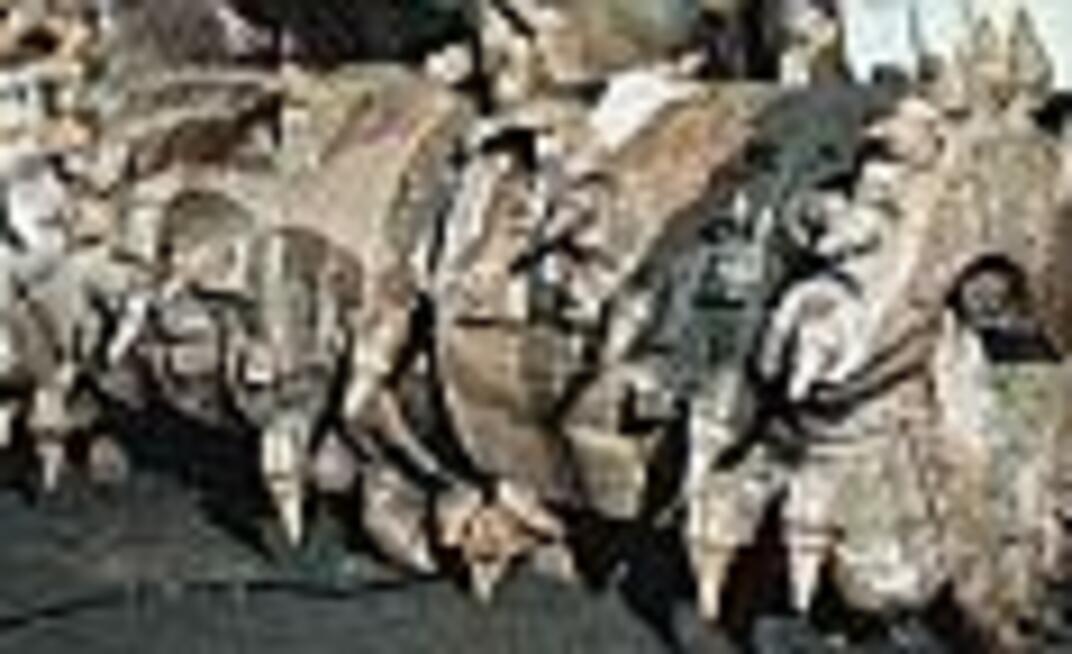MSHA have identified the following engineering and administrative controls effective in reducing noise exposure to miners operating on or working around continuous miners, augers and underground loaders.
Remote control with proper positioning of the operator
Treated cutting heads on auger miners, such as the application of stiffening gussets to the helix and filling voids with sand
Proper maintenance, including replacing bent or misaligned conveyor flights or sides and use of a chain with proper tension or one having an automatic chain tension device
Locate the shuttle car change-out point away from major noise sources, such as an auxiliary fan
Avoid idle parking in high noise areas
Keep miners away from auxiliary fans
Have mechanics and electricians avoid working near high noise sources during maintenance
Reduce utility personnel working time near the face and auxiliary fan
Limit operation of empty chain conveyors on all equipment, including the shuttle car, loading machine, continuous miner, mine-bolter and feeder breaker
Eliminate a high-pitched screech by instructing roof bolters to drill straight holes and to avoid metal strap contact with the drill steel
Follow a cutting cycle to minimize noise generation from both the continuous mining machine and the cutting process. For example, reduce cutting into roof and floor rock, cutting directly into in-seam rock and over sumping
Regulate engine RPM on diesel-powered shuttle cars during loading and dumping
Follow shuttle car loading and tramming procedures that minimize noise. For example, in times the conveyor chain is turning, increase distance from continuous miner and its boom
Follow loading and tramming procedures for loading machines that minimize noise
Turn off any mobile equipment when not in operation
Maintain proper fan blade clearance on dust scrubbers associated with continuous miner machines
Constrained layer damping on the conveyor pan on an auger miner. For example, the application of visco-elastic materials covered with wear steel to isolate the chain and flights from the conveyor pan line
MSHA also identified the following engineering controls as offering promise in reducing exposure:
Transparent barrier between operator and conveyor pan line
Constrained layer damping on the conveyor pan on a continuous ripper miner. For example, in the application of visco-elastic materials covered with wear steel to isolate the chain and flights from the conveyor pan line
Sand-filled conveyor decks
Enclosure and isolation of motors and pump housings where they have been demonstrated to be a significant noise source
Vibration isolation mounts on motors/pumps where they have been demonstrated to be a significant noise source
Chain conveyor with coated flights
Isolated cutting bits, such as the application of vibration isolation materials between the bits/block and the drum
Sand-filled cutting heads
The following administrative control offers promise:
Rotate center bolter operator with center bolter helper, roof bolter operators with utility personnel or shuttle car operators, miner-bolter operator with loading machine operator, or continuous miner operator with shuttle car operator
According to MSHA, the following noise controls offer promise for dust scrubbers associated with continuous miners:
Silenced fan housing
Sleeve-style attenuators
Alternative face air flow distribution systems, such as spray fan systems
Bolt-on attenuators
Appropriately selected, correctly installed, and properly maintained acoustical materials applied to the dust scrubber
























